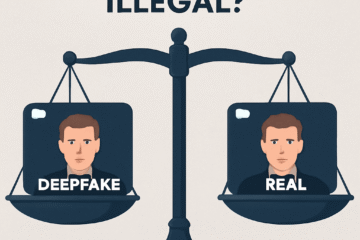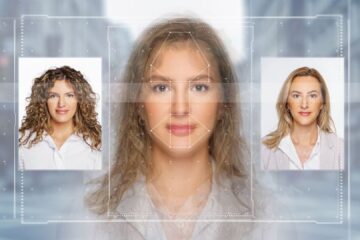From perfectly smooth skin to entirely fake influencers, AI-generated content on social media is redefining what we see—and what we believe. These tools can be fun and creative, but they also come with risks: misinformation, identity manipulation, and pressure to meet impossible beauty standards.
At VerifAI, our goal is to help you scroll smarter—not fooled.
The Rise of Synthetic Media
What started as cute puppy-ear filters has evolved into something much bigger. AI can now:
- Alter your face in real time,
- Generate photorealistic influencers,
- Clone voices and personalities,
- Even create entire “lives” that don’t exist.
One report from MIT Technology Review highlights how brands are using virtual influencers to save costs and avoid scandals—because digital models never age, complain, or miss deadlines.
But this also means you may be interacting with someone who’s not real—and not know it.
Why You Should Care
AI-generated content isn’t just about fun filters anymore. Here’s what’s at stake:
| Concern | Real-World Impact |
|---|---|
| Misinformation | Deepfakes of public figures spreading lies |
| Catfishing | Fake identities using AI-aged or gender-swapped photos |
| Mental Health | Unreal beauty filters fueling anxiety and body image issues |
| Brand Fraud | Fake influencer endorsements damaging reputations |
How to Spot AI-Generated Images and Videos
Here are 5 quick ways to check if something is AI-generated:
- Eyes & Teeth: Look for unnatural symmetry or lighting. AI often struggles with reflections.
- Background Distortion: Warped walls, melted text, or asymmetry usually means image generation.
- Shadows: Inconsistent light direction or floating objects can indicate AI use.
- Reverse Search: Drop the image into Google Images or TinEye to see if it appears elsewhere.
- Play the VerifAI Game: Try our 60-second Deepfake Detection Game to sharpen your skills!
Tips for Creators: Using AI Ethically
AI tools can still be part of authentic content creation—when used responsibly:
- Disclose edits with hashtags like
#AIgeneratedor#digitallyenhanced - Balance content with both edited and raw posts
- Educate followers on how filters change perception
Being transparent builds trust, especially with younger audiences.
Final Thoughts
AI-generated content on social media is here to stay. It opens the door to creativity and accessibility—but also blurs the line between what’s real and what’s not.
That’s why we built VerifAI: to help you spot the difference.
Explore Our Tips Section: Visit our Instagram to learn how to recognize deepfakes, face filters, and other synthetic content with confidence.
👉 Want to learn how to spot fake videos and AI-generated images?
🎯 Take the Deepfake Detection Quiz



1 Comment
Chris · April 25, 2025 at 7:53 pm
Some posts on social media disclose that they are AI and the ones who dont are usually exposed in the comments sections! so that helps a lot